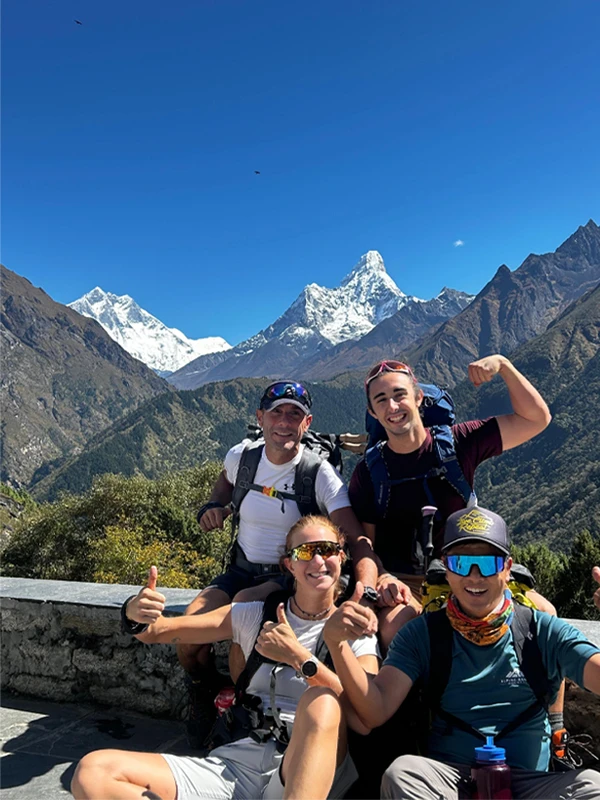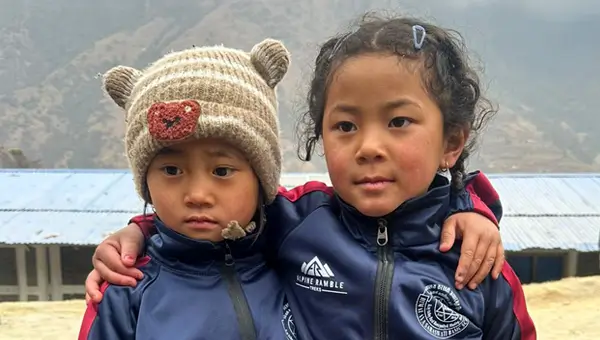Tent Peak is a popular trekking peak in the Annapurna region located in the northwestern region of Nepal. The top of the mountain resembles the shape of a Tent; due to this formation, it is commonly known as Tent Peak.
Situated in the north of the Annapurna Base Camp in the Annapurna Sanctuary, Tent Peak is one of the magnificent mountain peaks in the Annapurna Himalayan Range of Nepal.
Tent Peak Climb Highlights
-
Enjoy some of the world's tallest mountains, including Annapurna, Machhapuchare 9Fishtail), Nilgiri, and many more.
-
Summit of Tent Peak (5,695 m )
-
Explore the beautiful city of Lake Pokhara
- Dip in a natural hot spring at Jhinu Dada and soothe your aching body
- Explore the beautiful local settlements and lifestyle of the Gurung and Magar groups from day one to the final
- Be amazed at the spectacular 360 panorama view from Annapurna Base Camp
Tent Peak (Tharpu Chuli), a 5695m/18,679 ft peak, is one of the most beautiful trekking peaks rising in the middle of the amphitheater, encircled by immense walls of glaciers and mountains over 7000 and 8000 meters in height.
The trail leading to this stunning peak is an extraordinary trek to Annapurna Base Camp. It lies within the Annapurna region of Nepal at the top of the Annapurna Sanctuary. The Annapurna base camp trek is part of this journey.
However, the Tent Peak is popular as an easy peak to climb and is suited to those who want to have an ice-climbing experience without getting to too high an altitude.
This peak is also suitable for people who are restricted time-wise but are passionate about climbing in the Himalayas,
Our 18-day Tent peak journey begins in Kathmandu with a short excursion heritage sightseeing tour. The next day, we travel to Pokhara by luxury tourist bus.
From Pokhara, the next day, we will go by private jeep to Nayapul, where our trekking journey starts. Further approaching, we will go through hills, alpine meadows, waterfalls, rivers, and mountains. We will explore Gurung villages along the way and savor the great views of the Himalayas.
Best Time For Tent Peak Climbing
The time for Ten-peak climbing is in autumn and spring seasons; September to December is the autumn season, and March to May is the spring season. These months are undoubtedly the best time of the year for climbing ten peaks or any other peaks in the Nepal Himalayas. In addition, the autumn season comes after the monsoon, so the clouds will have entirely disappeared by then.
The bright blue skies provide an excellent view of the mountains. Many tourists come to Nepal for travel, trekking, and mountaineering in autumn as it is the peak season. Hence, it might be a little more crowded than usual since it is called a very high peak season in Nepal.
Likewise, the spring months of March to May come right after the winter cold season in Nepal, and the flowers bloom and the hills turn red with rhododendron trees. Trekking or climbing at this time of the year is amazing ,with the magnificent views and moderate weather.
The Difficulty Level of Tent Peak Climbing
The Ten Peak is a non-technical climbing one, but it is more challenging than normal trekking in the Himalayas. The technical grade of level 2 is defined as” mountain climbing with occasional use of hands, chains or ropes.” Fitness level C is defined as “moderate: reasonably fit hikers who hike at least once a month elevation gain of 800-1500 m and distance of 15 km in a day.”
Furthermore, a basic level of fitness has to be maintained by all the trekkers who are going to be climbed this peak, however, there is no previous climbing experience is required, a normal person with an average fitness level can easily do this climbing with your own self courage and determinations.
This guided journey will be led by one of the most experienced local climbing and trekking leaders, who will accompany you from the beginning to the end to make sure everything is in good shape and to make sure your journey is successful, more comfortable, and memorable.
ADDITIONAL BENEFITS
- Free domestic and international airport transfers upon arrival and departure.
- Complimentary use of any necessary trekking equipment, such as sleeping bags, down jackets, duffle bags, walkie-talkies, trekking poles, and an oximeter to monitor your oxygen and pulse.
- Fun souvenirs of your Himalayan adventure: a trekking route map, a t-shirt emblazoned with the Alpine Ramble Treks logo, and a hat!


